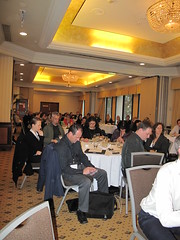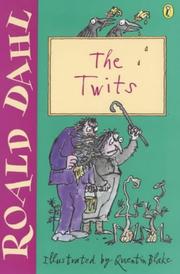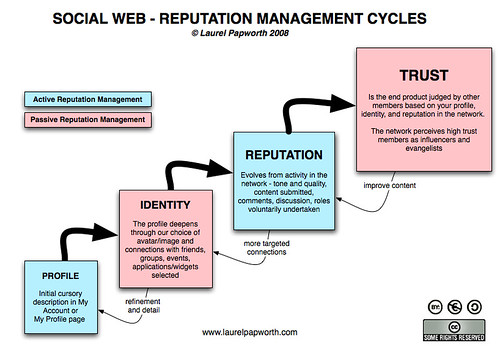
This year's
LGWN conference was a thought provoking couple of days with some very interesting speakers and themes. I throughly enjoyed it and want to start by extending a warm thank you to Reem Abdelaty (
@reemski) and James Purser and (
@purserj) for all their work organising the conference. The
audio from most of the speakers are now available on the LG Web Network site and many of the presentations have also been made available as well.
As always a large amount of ground was covered but for me a couple of key themes emerged.
Crisis Response
This was a big one this year with talks from
Jason Dawson (
@WebTaniwha) about the information response to the earthquakes in Christchurch and
Anthony Baxter (
@AnthonyBaxter) from Google's Crisis Response team.
Jason related his experiences in the aftermath of the disaster in Christchurch as the Public Information Manager. The challenges their team faced with so much damaged infrastructure, including the official Christchurch City website were enormous but the way they managed was inspiring. His talk served as a warning for us all to give more time and thought to preparing for the worst and also reminded us of the value of social media in such situations.
Anthony Baxter introduced us (or me at least) to
Google's Crisis Response Project, which I had no idea existed. Google swings into action in the immediate aftermath of disasters to ensure that critical information remains accessible. I hadn't thought about it but not many local governments (or, I suspect, state or federal governments for that matter) have the infrastructure to deal with the massive amount of web traffic generated as a result of these crises. Anthony showed examples from the Victorian Bushfires (locating fires on a map, etc) and the Japan Earthquake and tsunami (which roads are open and the amazing crowd sourced people finder). Understandably, the first thing that happens when everyone goes online for information is that the official sites crash under the load. He outlined how Google goes about collecting and re-publishing critical information as they have no trouble handling the server load.
Openness and Accessibility
Anthony Baxter ended his presentation with a plea to us to make our data available in open formats with re-use licenses, ie. Open Data. They can strip data from PDFs if necessary but from the sound of it, if he has to do that for your data in a crisis situation, Anthony will be ready to track you down and kill you! However, if we work on making our data open, accessible and licensed now then reacting to a crisis becomes exponentially easier.
On a related theme, a presentation by
Gian Wilde (
@accessibilityoz) on the accessibility problems associated with PDFs provided another reason (if we needed one) to move away from closed formats toward open ones. A quick look around any local government website will illuminate our ridiculous reliance on PDFs as a way to publish information. Imagine the panic if a local government was successfully sued for a breach of discrimination legislation due to their use of PDFs!
What makes it worse for me is that I believe it comes down to our own inertia and laziness - being stuck in the 'way we have always done it'. How many publications are prepared by local government with the expresses intention of creating a PDF to upload to the website? When we realised we could outsource the printing costs of our publications to our community we jumped right on board. But when will we realise that if it's not going to be printed then it doesn't need to be a publication. Create that information in a format suited to the medium in the first place - is that too much to ask?
It might be timely to reaffirm the
Three Laws of Open Government Data:
- If it can’t be spidered or indexed, it doesn’t exist
- If it isn’t available in open and machine readable format, it can’t engage
- If a legal framework doesn’t allow it to be repurposed, it doesn’t empower
Picking up on the last point above,
Professor Anne Fitzgerald spoke about how 'open content licences - specifically, Creative Commons (CC) licences - can be used by governments as a simple and effective mechanism to support the reuse of their copyright-protected Public Sector Information'. As is often the case with conferences, this was one presentation that I didn't actually get to sit in on as it was on at the same time as another talk I wanted to hear.
Finally on the theme of openness,
Matt Crozier (
@MattCrozier) from
Bang the Table gave us the benefit of his experience with online consultation and how, if done well, it can be an effective tool for getting your local community engaged. I certainly felt the vibe in the room pick up as he spoke about how online engagement can help decision makers put the sqeaky wheel minority in perspective. With many traditional forms of consultation often responses are received only from a relatively small number of people in the community. An easy way to respond online can elicit feedback from people who may not otherwise be bothered.
Mistakes are Inevitable
One thing that Matt's presentation did reveal is that in any new area you learn by taking risks and trying new things. While not strictly from mistakes, it was clear that many the lessons he has learned about running an effective online engagement program came from trial and error. In the online world it's simply not practical to expect to do anything perfectly first time. The benefits of jumping in a trying new things far outweigh the risks associated with making a mistake.
A couple of the other speakers indicated that they had made mistakes in the way they used the web or the things they said. Indeed it was one of the major themes of
my own talk. The web is not like an annual report that you prepare over weeks and get to proof read over and over and having all your tweets approved just doesn't make sense. The web is more akin to a telephone call these days that it is to a printed document. If you don't occasionally make a mistake you're probably not communicating anything of much relevance. But mistakes aren't the end of the world. If you are prepared to accept them, correct them and move on you'll be OK.
There were a bunch of speakers I haven't mentioned above that gave us all food for thought.
I personally really enjoyed
Eric Dinkin's (
@ask6d) discussion of his trial of Online Chat for live customer service and
Anita Hulme championing that Toyota Camry commas channel - email newsletters. And who could forget Jason Richardson (
@showcasejase) imploring us to stand up for our health and longevity!
If I had to highlight a couple of personal take-aways from the conference they would be as follows:
Consider your backup strategy - how would you cope if you lost everything? In a situation like Christchurch, keeping your backups in a different building in the same city is not much help! This isn't just related to earthquakes though, think about widespread flogging, major bushfires, even an interruption to the electricity supply (are both buildings on the same grid?). It's very easy to lose both your primary and backup data in the same incident. Consider partnering with another city in a different part of the country to host each other's data.
Secondly, Twitter and Facebook have proved robust, redundant and effective communication channels in disaster situations. Between the physical damage and the traffic that it was experiencing in the aftermath, as people were trying to contact friends and relatives, the fixed line network was unreliable at best. The mobile network, on the other hand, was remarkably robust. The widespread adoption of Twitter and Facebook and their availability on the proliferation of smartphones meant that these channels were an effective means of communication and became pseudo official channels. The lesson to be learned here is that you don't want to leave it until there is a disaster to learn about how best to use social media. If you're not already at least experimenting with Twitter, get in and try it out. It's not that difficult and it can be life saving in a disaster.
And that brings me to the closing keynote by
Stilgherrian (
@stilgherrian). His entertaining talk on the paranoia of organisations and how sticking a toe in the water with twitter can be the way out made it seem so easy and obvious as a tool that all local governments should be using. If only all our decision-makers were forced to listen to him speak we might all be in a better place!




